Decision of the State Intellectual Property Office on Amending the Guidelines for Patent Examination (Bureau Announcement No. 391)
Release Time:
2020-12-30
State Intellectual Property Office
Thirty-nine number
In order to comprehensively implement the spirit of the important instructions of General Secretary Xi Jinping on strengthening the protection of intellectual property rights, deepen the implementation of the decision-making and deployment of the reform of "put in charge of service", actively respond to the demands of the rapid development of economy and science and technology on the examination rules, and improve the quality of patent examination and examination efficiency, the State Intellectual Property Office has decided to amend the Patent Examination Guidelines, which is hereby issued. It is hereby issued and shall come into force from January 15, 2021 onwards.
It is hereby announced.
State Intellectual Property Office
December 11, 2020
Decision of the State Intellectual Property Office on amending the Guidelines for Patent Examination
The State Intellectual Property Office has decided to amend the Guidelines for Patent Examination as follows:
Amendments to section 3.5 of Chapter X of Part Two
Section 3.5 of Chapter X of Part II of the Patent Examination Guidelines is amended to read:
3.5 Supplementary experimental data
3.5.1 Review principles
To determine whether the specification is fully disclosed, the contents contained in the original specification and the claims shall prevail.
The examiner shall examine the experimental data submitted by the applicant after the filing date to meet the requirements of paragraph 3 of Article 22 and paragraph 3 of Article 26 of the Patent Law. The technical effect proved by the supplementary experimental data should be able to be obtained by the technical personnel in the technical field from the content disclosed in the patent application.
3.5.2 Supplementary experimental data for drug patent applications
An example of an examination involving a drug patent application is given in accordance with the examination principles in Section 3.5.1 of this chapter.
[Example 1]
The claim claims to protect compound A, and the specification records the preparation embodiment of compound A, the effect of lowering blood pressure and the experimental method of measuring the activity of lowering blood pressure, but does not record the experimental result data. In order to prove that the manual was fully disclosed, the applicant submitted additional data on the hypotensive effect of compound A. For the technical personnel in the technical field, according to the record of the original application document, the blood pressure lowering effect of compound A has been disclosed, and the technical effect to be proved by the supplementary experimental data can be obtained from the content disclosed in the patent application document. It should be noted that the supplemental experimental data should also be examined when examining creativity.
[Example 2]
The claim requests protection of general formula I compounds. The specification records general formula I and its preparation method, the preparation examples of several specific compounds A and B in general formula I, and also records the anti-tumor effect of general formula I, the experimental method for determining anti-tumor activity and the experimental result data. The results of the experiment were recorded as embodiments. The IC50 value of the compound against tumor cells was in the range of 10-100nM. In order to demonstrate the creativity of the claim, the applicant submitted supplementary comparative experimental data showing that compound A has an IC50 value of 15 nm and compound in comparison Document 1 has an IC50 value of 87nM. For technicians in the technical field, compound A and its anti-tumor effects have been disclosed according to the records in the original application documents, and the technical effects to be proved by the supplementary experimental data can be obtained from the contents disclosed in the patent application documents. It should be noted that at this time, the examiner also needs to combine the supplementary experimental data to further analyze whether the technical solution of the claim for protection meets the requirements of creativity.
Amendments to section 4.2.3 of Chapter X of Part Two
In the last paragraph of section 4.2.3 of Chapter X of Part II of the Patent Examination Guide, amend "shall be written as a performance or use qualified type" to "usually need to be written as a performance or use qualified type" and replace "in some fields, such as alloys, it is generally necessary to state the properties and/or uses inherent in the alloy of the invention". Amend to read "In certain fields, such as alloys, it is generally appropriate to specify the properties and/or uses inherent in the alloy of the invention."
Other content in this section is unchanged.
Amendments to Section 5.1 of Chapter X of Part Two
Paragraph (1) in Section 5.1 of Chapter 10 of Part II of the Patent Examination Guidelines is amended to read:
(1) Where a patent application requires the protection of a compound, if the chemical name, molecular formula (or structural formula) and other structural information of the compound are recorded in a comparative document, so that the technical personnel of the technical field believe that the compound that is required to be protected has been disclosed, the compound does not have novelty. Except where the applicant can provide evidence that the compound was not available before the date of application.
If the structural information recorded in a comparison document is not sufficient to determine the structural similarities and differences between the compound claimed for protection and the compound disclosed in the comparison document, but after comprehensive consideration of other information recorded in the comparison document, including physical and chemical parameters, preparation methods and experimental data of effects, it is reasonable for a person skilled in the technical field to assume that the two are substantially identical, The compounds claimed for protection are not novel unless the applicant can provide evidence of structural differences.
Other content in this section is unchanged.
Amendments to Section 6.1 of Chapter X of Part Two
Section 6.1 of Chapter 10 of Part II of the Patent Examination Guidelines is amended to read:
6.1 Creativity of compounds
(1) To judge the creativity of the invention of a compound, it is necessary to determine the structural difference between the compound requiring protection and the compound closest to the prior art, and on the basis of the use and/or effect obtained by carrying out such structural modification, to determine the technical problem that the invention actually solves. Determine whether the prior art as a whole gives the technical enlightenment to solve the technical problem through this structural transformation.
It should be noted that if the technical personnel in the technical field can carry out such structural transformation to solve the technical problems by logical analysis, reasoning or limited testing on the basis of the prior art, and obtain the compounds required for protection, the prior art is considered to have technical enlightenment.
(2) The use and/or effect of the structural modification of the compound closest to the prior art may be to obtain a use different from that of the known compound or to improve the effect of some aspect of the known compound. When judging the creativity of a compound, if such change in use and/or improvement in effect is unexpected, it reflects that the compound seeking protection is non-obvious and its creativity should be recognized.
(3) It should be noted that in judging the creativity of the invention of a compound, if the effect of the technical solution requiring protection is caused by a known inevitable trend, the technical solution is not creative. For example, A prior art insecticide A-R, where R is the alkyl of C1-3, has been shown to increase the insecticidal effect as the number of alkyl C atoms increases. If the applied insecticide is A-C4H9, the insecticidal effect is significantly higher than the insecticidal effect of the prior art. The application was not creative as the prior art indicated an inevitable trend towards improving insecticidal effectiveness.
(4) Examples of creative judgment
[Example 1]
Existing technology:
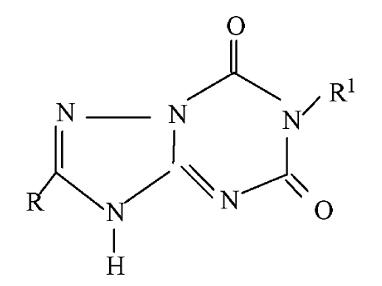
(Ia)
Application:
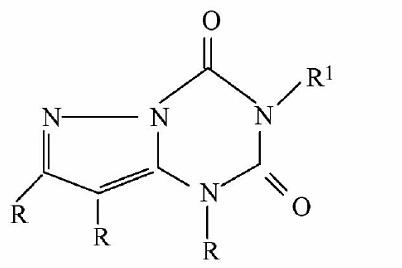
(Ib)
(I b) and (I a) have different parent nuclei, but they have the same purpose. Those skilled in the technical field generally believe that compounds with similar structures have the same or similar uses, and structural proximity usually means that the compounds have the same basic core parts or basic rings. In the existing technology, there is no technical inspiration to transform the basic ring of (Ⅰa) to obtain (Ⅰb) and its use remains unchanged, so (Ⅰb) is creative.
[Example 2]
Existing technology:H2N-C6H4-SO2NHR1 (Ⅱa)
Application:H2N-C6H4-SO2-NHCONHR1 (Ⅱb)
(Ⅱb) is the insertion of -CONh - into the structural fragment of (Ⅱa) NHR1, which has completely different uses. (Ⅱa) sulfonamide is an antibiotic, and (Ⅱb) sulfonylurea is an antidiabetic drug. Technicians in the technical field have no incentive to transform R1 in antibiotics into CONHR1 to obtain antidiabetic drugs, so (Ⅱb) is creative.
【 Example 3】
Existing technology:H2N-C6H4-SO2NHCONHR1(Ⅲa)
Application:H3C-C6H4-SO2NHCONHR1(Ⅲb)
There are only NH2 and CH3 structural differences between (Ⅲa) aminosulfonylurea and (Ⅲb) methyl-sulfonylurea, both of which are antiglycosuric drugs with similar effects. Compared with (Ⅲa), (Ⅲb) provides another antiglycosuric drug for its technical field. Since NH2 and CH3 are classical monovalent isosteres, technicians in the technical field have an incentive to perform such isosteric replacement in order to obtain the same or equivalent antiglycosuric activity, so (Ⅲb) is not creative.
【 Example 4】
Existing technology:

(Ⅳa)
Application:
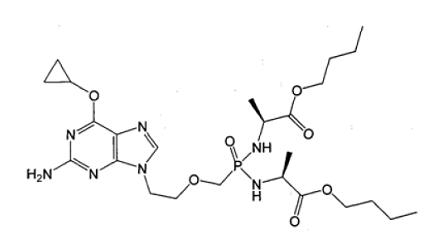
(Ⅳb)
The only difference between (IV b) and (IV a) compounds is that -NH- is replaced by -o - at the purine 6-position. Although -O- and -NH- are classical electron isotypes known in their technical fields, the growth inhibition activity of (IV b) is about 40 times higher than that of (IV a), and (IV b) has achieved unexpected technical effects compared with (IV a), which reflects that (IV b) is not obvious, so (IV b) is creative.
[Example 5]
Existing technology:
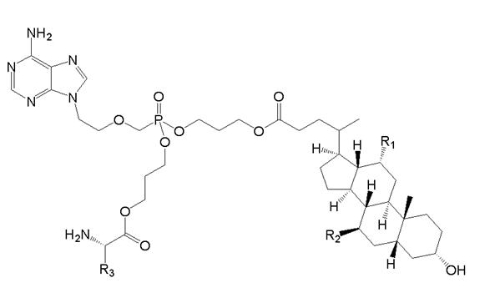
(Ⅴa)
Where R1=OH, R2=H and R3=CH2CH(CH3)2.
Application:
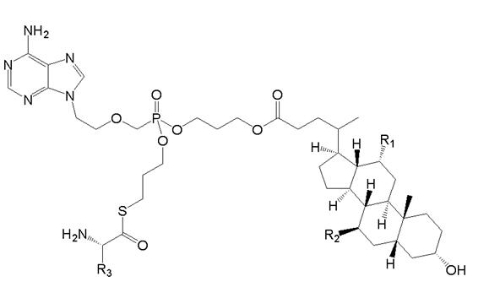
(Ⅴb)
Where R1 and R2 are selected from H or OH, and R3 is selected from C1-6 alkyl, and includes the specific compound R1=OH, R2=H, and R3=CHCH3CH2CH3 (Ⅴb1). The anti-HBV activity of (Ⅴb1) was better than that of (Ⅴa).
When protection of (Ⅴb) compounds is required, the difference between (Ⅴb) and (Ⅴa) is only that the linking atom between the phosphoryl alkyl group and the amino acid residue is different, (Ⅴb) is -S-, and (Ⅴa) is -O-. (Ⅴb) general compound relative to (Ⅴa) for the technical field to provide another anti-hepatitis B drug. Due to the close nature of -S- and -O-, in order to obtain other drugs with the same anti-hepatitis b virus activity, technicians in the technical field have an incentive to carry out such substitution and obtain the general formula of the (Ⅴb) compound, so (Ⅴb) is not creative.
When it is required to protect (Ⅴb1) specific compounds, the difference between (Ⅴb1) and (Ⅴa) is not only that the above connecting atoms are different, but also that the R3 substituents are not the same, and the anti-hepatitis B virus activity of (Ⅴb1) is significantly better than that of (Ⅴa). In the prior art, there is no technical inspiration for improving anti-HBV activity through the structural modification, so (Ⅴb1) is creative.
Changes to section 9.2.1 of Chapter X of Part Two
Paragraph 9.2.1 (4) of Chapter 10 of Part 2 of the Patent Examination Guidelines reads "including the General Microbiology Center of the China Microbial Culture Preservation Management Committee (CGMCC) in Beijing and the China Typical Culture Preservation Center (CCTCC) in Wuhan, China." Amended to "Include the General Microbiology Center (CGMCC) of the China Microbiological Culture Preservation Management Committee in Beijing, the China Typical Culture Preservation Center (CCTCC) in Wuhan, and the Guangdong Provincial Microbiological Culture Preservation Center (GDMCC) in Guangzhou, China."
Other content in this section is unchanged.
Amendments to section 9.3.1.7 of Chapter X of Part Two
Section 9.3.1.7 of Chapter 10 of Part II of the Patent Examination Guidelines is amended to read:
9.3.1.7 Monoclonal antibody
Claims against monoclonal antibodies can be limited either by structural characteristics or by the hybridoma that produces them.
[e.g.]
(1) Monoclonal antibodies to antigen A containing VHCDR1, VHCDR2, and VHCDR3 with amino acid sequences as shown in SEQ ID NO:1-3, and VLCDR1, VLCDR2, and VLCDR3 with amino acid sequences as shown in SEQ ID NO:4-6.
(2) Monoclonal antibody to antigen A, produced by hybridoma with storage number CGMCC NO:xxx.
Amendments to Section 9.4.2 of Chapter X of Part Two
(Ⅰ) Add three new paragraphs under the heading "Creativity" in Section 9.4.2 of Chapter X of Part II of the Patent Examination Guidelines, which read as follows:
The judgment of invention creativity in the field of biotechnology should also judge whether the invention has outstanding substantive characteristics and significant progress. In the process of judgment, it is necessary to determine the distinguishing features of the invention and the closest prior art according to the specific limited content of different protection topics, and then determine the technical problems that the invention actually solves based on the technical effects that the distinguishing features can achieve in the invention, and then determine whether the prior art as a whole gives technical enlightenment, based on which it is obvious whether the invention is relative to the prior art.
Inventions in the field of biotechnology involve different levels of protection topics such as biological macromolecules, cells, and microbial individuals. In addition to the common ways of characterizing these conservation topics, such as structure and composition, special ways such as biological material deposit numbers are also included. Creative judgment needs to consider the structural differences between the invention and the prior art, the distance of kinship and the predictability of the technical effect.
Below, some specific cases of creative judgment in different protection topics in this field are shown.
(Ⅱ) Paragraph 9.4.2.1 (1) of Chapter 10 of Part II of the Patent Examination Guidelines is amended as follows:
(1) Genes
If a protein encoded by a structural gene has a different amino acid sequence and a different type of or improved performance than a known protein, and the prior art does not give technical implications for such changes in performance due to the difference in the sequence, then the gene encoding the protein has been creatively invented.
If the amino acid sequence of a protein is known, then the invention of the gene encoding that protein is not creative. If a protein is known and its amino acid sequence is unknown, then the invention of the gene encoding the protein is not creative as long as the amino acid sequence can be easily determined by a person skilled in the art at the time of submission of the application. However, in both cases, the invention of the gene is creative if it has a specific base sequence and has an effect not anticipated by those skilled in the art compared to other genes with different base sequences that encode the protein.
An invention is not creative if the structural gene sought for protection is a naturally acquired mutated structural gene of a known structural gene, and the structural gene sought for protection originates from the same species and has the same properties and functions as the known structural gene.
(Ⅲ) To add a polypeptide or protein item (2) to Section 9.4.2.1 of Chapter 10 of Part II of the Patent Examination Guidelines, as follows:
(2) Polypeptides or proteins
If the polypeptide or protein for which protection is sought is different in amino acid sequence from a known polypeptide or protein and has different or improved properties, and the prior art does not give technical implications for such changes in properties as a result of the sequence difference, the invention of the polypeptide or protein is creative.
(Ⅳ) Amend "(2) recombinant carrier" in Section 9.4.2.1 of Chapter 10 of Part II of the Patent Examination Guide to "(3) recombinant carrier", and insert a paragraph before the original content, which reads as follows:
The invention of the recombinant vector is creative if the invention of the structural modification of the known vector and/or the inserted gene improves the performance of the recombinant vector, and the prior art does not provide technical inspiration for using the said structural modification to improve the performance.
(Ⅴ) Revise "(3) transformants" in Section 9.4.2.1 of Chapter 10 of Part Two of the Patent Examination Guidelines to "(4) transformants", and insert a paragraph before the original content, which reads as follows:
The invention of the transformation is creative if the invention of a structural modification to a known host and/or inserted gene improves the performance of the transformation, and the prior art does not give technical implications for using the structural modification to improve the performance.
(Ⅵ) Amend "(4) fused cells" in Section 9.4.2.1 of Chapter 10 of Part 2 of the Patent Examination Guidelines to "(5) fused cells".
(Ⅶ) Revise "(5) monoclonal antibody" in Section 9.4.2.1 of Chapter 10 of Part II of the Patent Examination Guidelines to "(6) monoclonal antibody", and revise the content as a whole as follows:
If the antigen is known, the monoclonal antibody characterized by the structural characteristics of the antigen is significantly different from the known monoclonal antibody in the key sequence that determines the function and use, and the prior art does not give the technical inspiration to obtain the monoclonal antibody of the said sequence, and the monoclonal antibody can produce beneficial technical effects, then the invention of the monoclonal antibody is creative.
If the antigen is known and it is clear that the antigen is immunogenic (for example, if the polyclonal antibody to the antigen is known or the antigen is a macromolecule polypeptide, it is clear that the antigen is immunogenic), then the invention of a monoclonal antibody defined only by the antigen is not creative. However, if the invention is further defined by the hybridoma of the monoclonal antibody secreting the antigen, and thus causes it to produce an unexpected effect, the invention of the monoclonal antibody is creative.
Other content in this section is unchanged.
This decision shall come into force on January 15, 2021.
Relevant Content
Patent Agency Regulations (2018)
2018-11-20
Defense Patent Regulations (1990)
2015-09-08
National Defense Patent Regulations (2004)
2015-09-08
Patent Agency Regulations (1991)
2015-09-02
Telephone:
Telephone:+86-755-82566227、82566717、13751089600
Head Office:13 / F, Building 14, Longhua Science and Technology Innovation Center (Mission Hills), No. 8 Golf Avenue, Guanlan Street, Longhua District, Shenzhen
Head Office:
13 / F, Building 14, Longhua Science and Technology Innovation Center (Mission Hills), No. 8 Golf Avenue, Guanlan Street, Longhua District, Shenzhen
Subsidiary Company:2808, Block B2, Yuexiu Xinghui Junbo, No.18 Tazihu East Road, Jiangan District, Wuhan City, Hubei Province
Subsidiary Company:
2808, Block B2, Yuexiu Xinghui Junbo, No.18 Tazihu East Road, Jiangan District, Wuhan City, Hubei Province

Service Number

Subscription Number
Copyright ©2016 Shenzhen Shenkexin patent Agency Co., LTD All rights reserved | 粤ICP备2021174526号
Copyright ©2016 深圳市深可信专利代理有限公司 版权所有 | 粤ICP备2021174526号 SEO标签
Copyright ©2016 深圳市深可信专利代理有限公司 版权所有